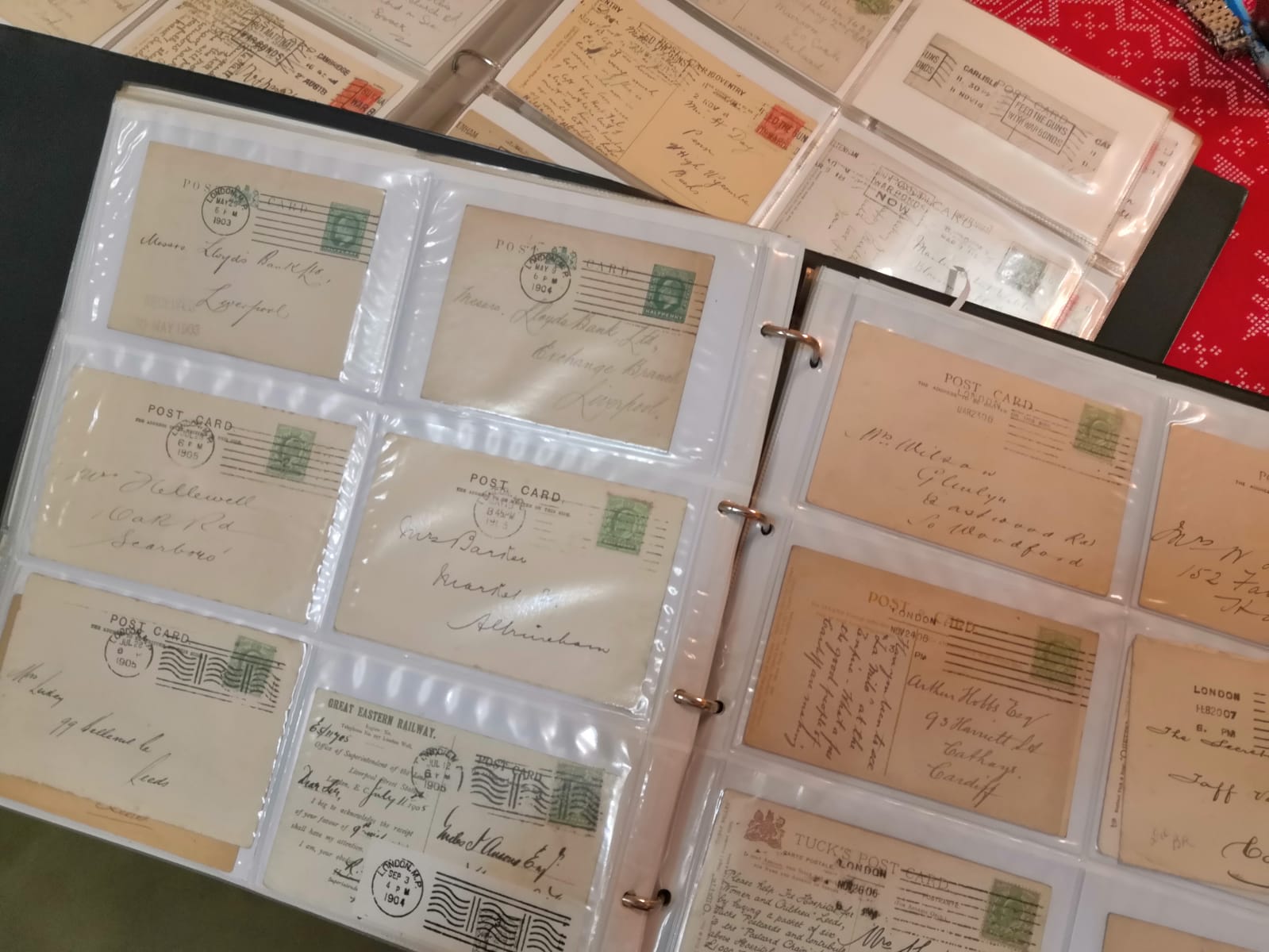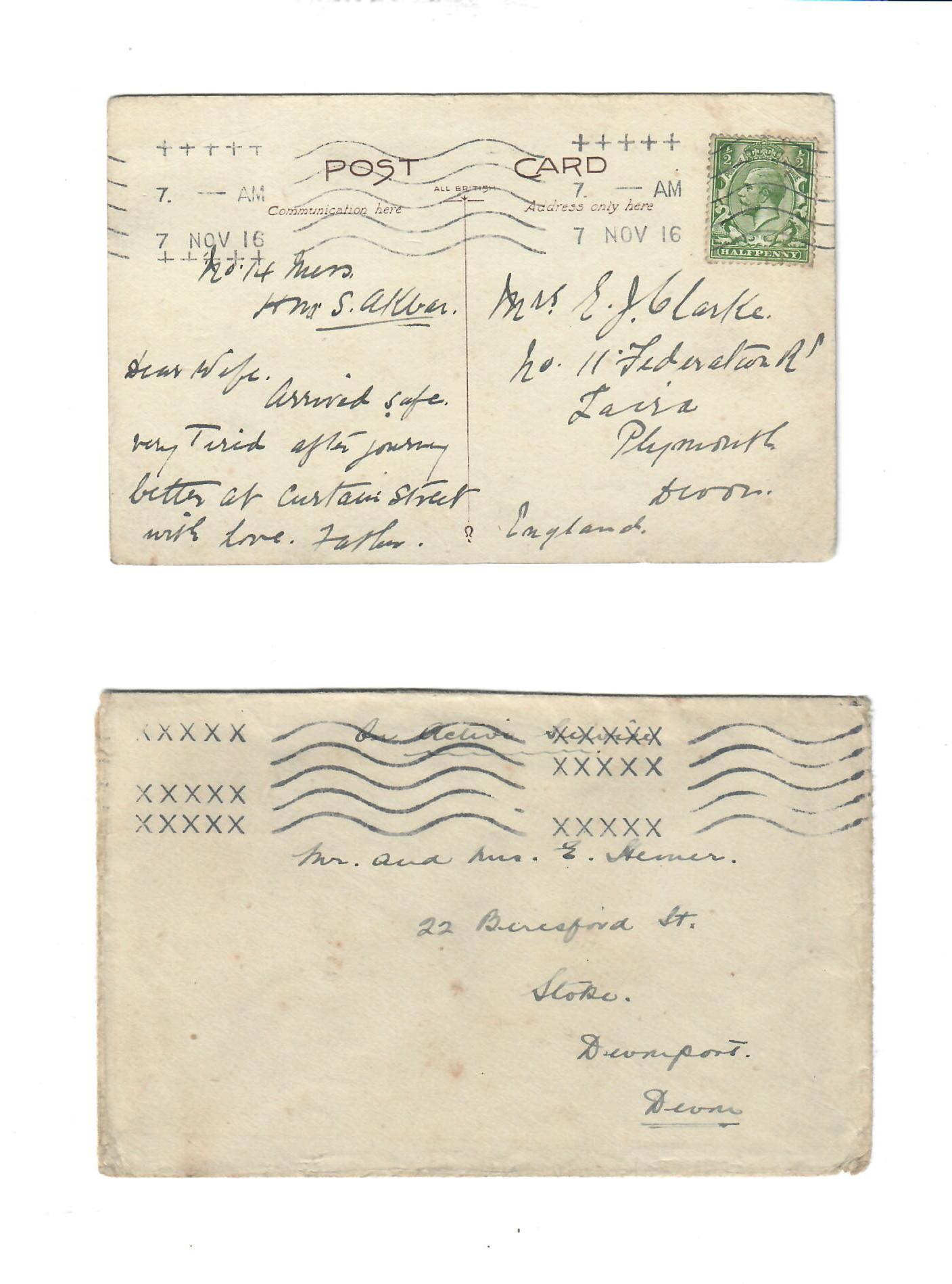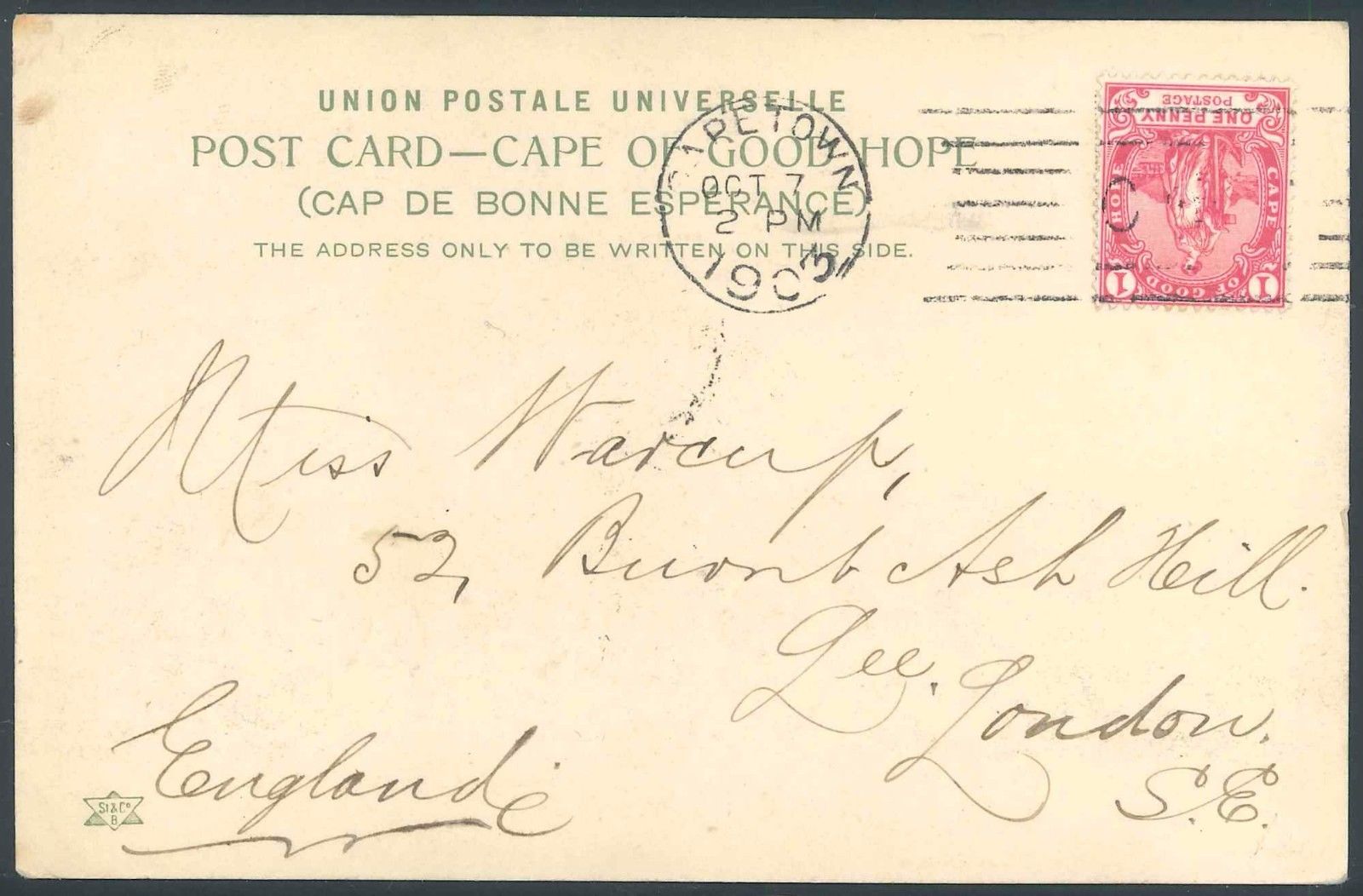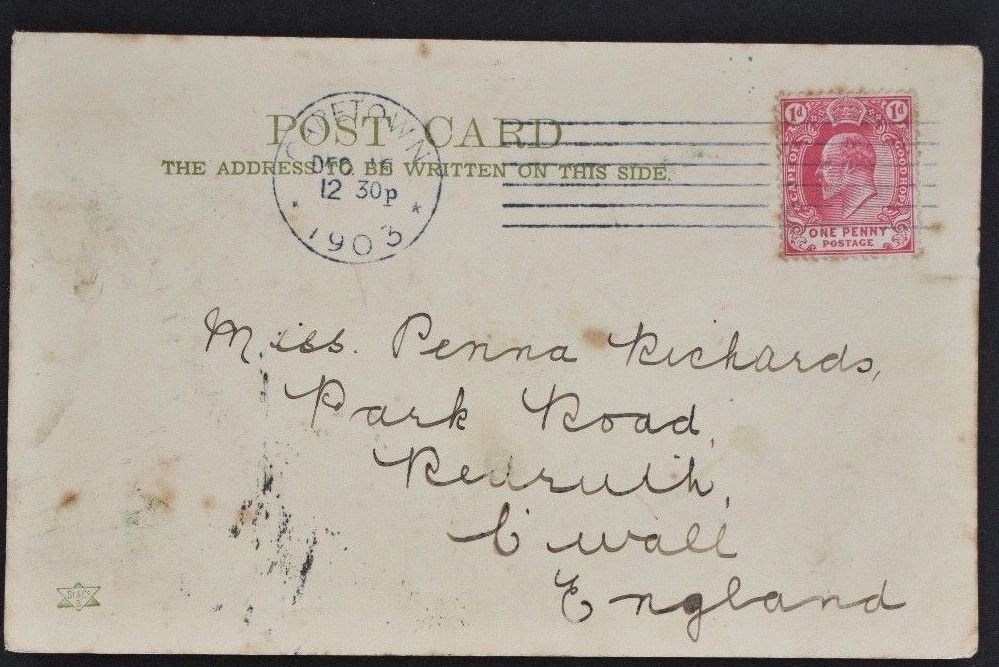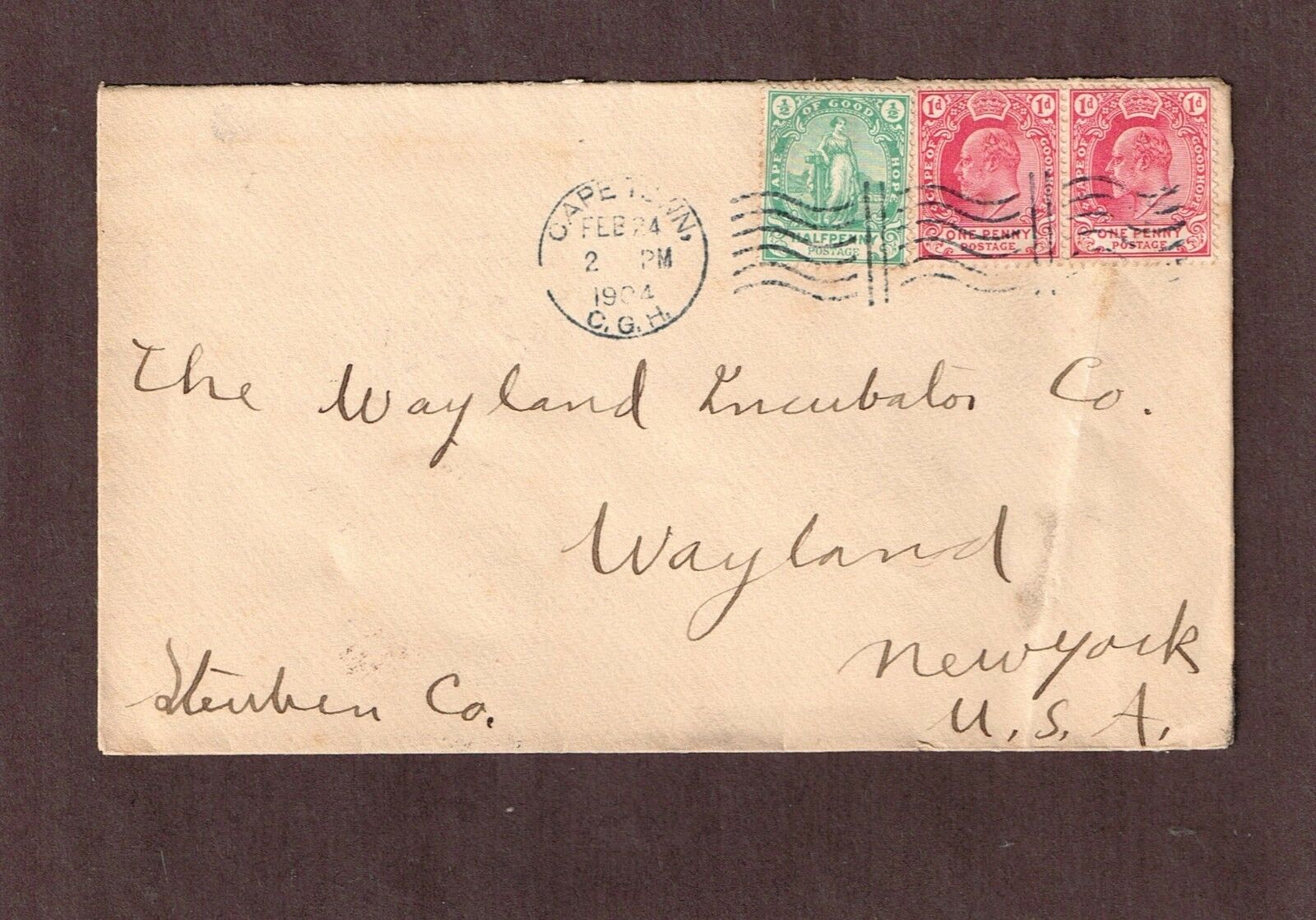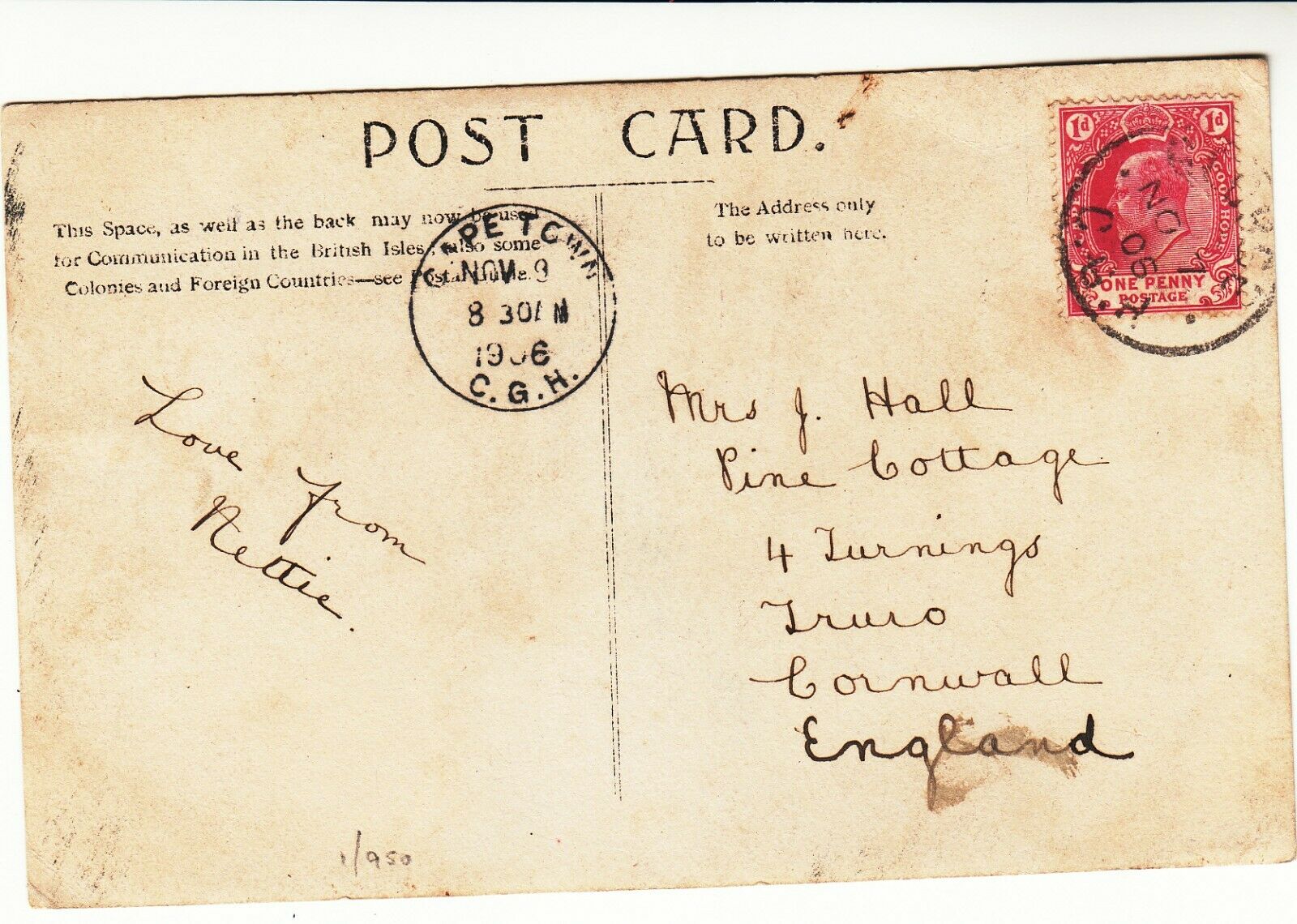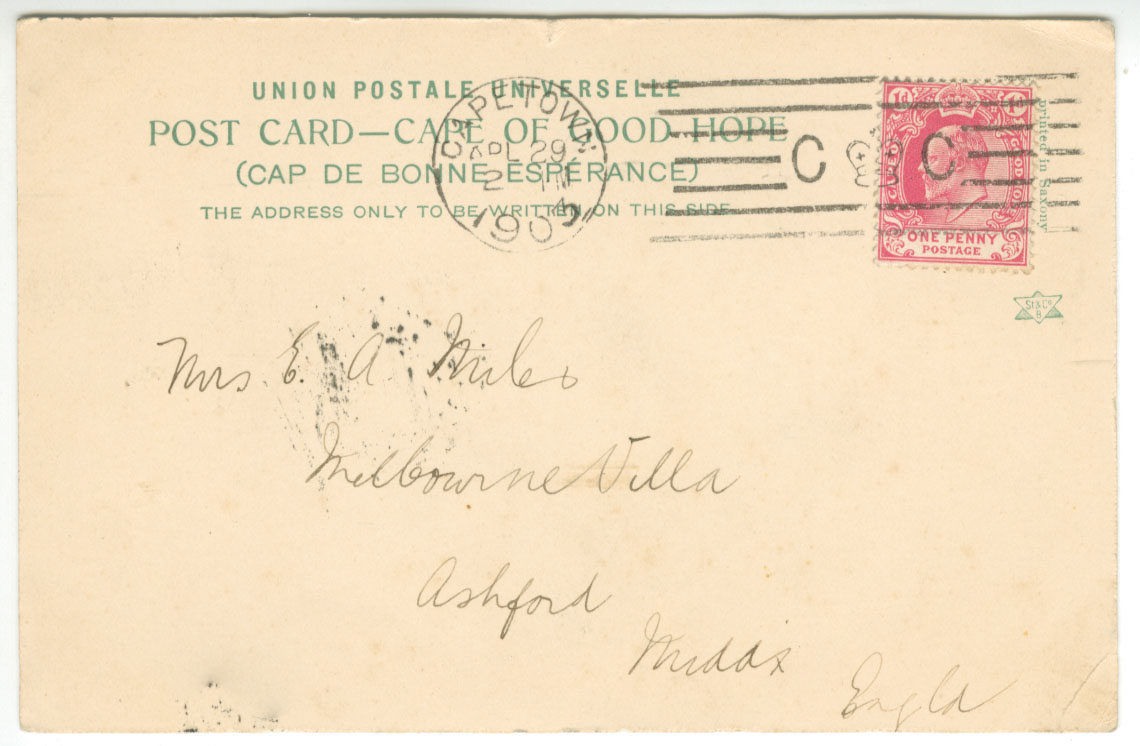Machine Marks
Quote from yannisl on September 12, 2020, 4:36 pmI am opening this thread for machine cancellations, in order to try and understand them better and for other people to add material, thoughts and comments. My original interest was the limited number one can find for the Cape of Good Hope. As information was scarce for some original research, I thought to do what the Cape Postmaster was always doing that is look at what the "mother" country was doing. On the spur of the moment I bought a few covers of machine cancellations of the period. Plus I have a few boxes of GB material which need sorting out. I never really managed to do much about since, but now with this website maybe I can start at the beginning.
The albums are shown below, probably around 600+ items waited to have their stories told. There is very little War II material. Most of the Material is Edwardian when the first slogan appeared "BUY WAR BONDS" and its variants.
I am opening this thread for machine cancellations, in order to try and understand them better and for other people to add material, thoughts and comments. My original interest was the limited number one can find for the Cape of Good Hope. As information was scarce for some original research, I thought to do what the Cape Postmaster was always doing that is look at what the "mother" country was doing. On the spur of the moment I bought a few covers of machine cancellations of the period. Plus I have a few boxes of GB material which need sorting out. I never really managed to do much about since, but now with this website maybe I can start at the beginning.
The albums are shown below, probably around 600+ items waited to have their stories told. There is very little War II material. Most of the Material is Edwardian when the first slogan appeared "BUY WAR BONDS" and its variants.
Uploaded files:
Quote from yannisl on September 12, 2020, 4:40 pmI never thought they had x-rated machine cancellers, but here you go.
Probably some military establishment?
I never thought they had x-rated machine cancellers, but here you go.
Probably some military establishment?
Uploaded files:Quote from yannisl on September 12, 2020, 4:53 pmBack to the Cape, the oldest item I have is an 1899 P.O. Savings Bank advice.
I have seen other similar items from the Savings Bank and are mostly of a different shape? Does anyone have anything similar (UK, RSA or Cape?). The savings bank brought additional income to the Post Office, but its biggest benefit was social, as it opened banking to the lower classes. Attached are also tow savings deposits books from 1895. the bank deserves another thread so if anyone has material please add it on the thread.
More on the machine cancellers will follow.
Back to the Cape, the oldest item I have is an 1899 P.O. Savings Bank advice.
I have seen other similar items from the Savings Bank and are mostly of a different shape? Does anyone have anything similar (UK, RSA or Cape?). The savings bank brought additional income to the Post Office, but its biggest benefit was social, as it opened banking to the lower classes. Attached are also tow savings deposits books from 1895. the bank deserves another thread so if anyone has material please add it on the thread.
More on the machine cancellers will follow.
Uploaded files:
Quote from yannisl on September 12, 2020, 5:14 pmJust a few comments also on the presentation of some of the pages. They are all still being drafted as I write parts of the collection that was not written up, as well as re-writing some of the older material. The little circle with an arrow, it means I haven't seen many copies of such items or possibly unique.
I am also writing the collection as a "book". Many collectors and I know exhibition judges are very busy people with little time to spare and want "minimum words". I appreciate the view but will in any case use more than less for both my convenience and other collectors looking for information. In the write up I add introductions and introduce more references than normal. So I will be posting mostly pdfs. They don't look very nice as attachments, but they have the advantage that the search engines can read them, so hopefully more philatelists can find them and visit the site. They can also be magnified by the reader without any loss of detail.
I attach the first page of the Machine Cancellers of the Cape of Good Hope. What do you think?
Just a few comments also on the presentation of some of the pages. They are all still being drafted as I write parts of the collection that was not written up, as well as re-writing some of the older material. The little circle with an arrow, it means I haven't seen many copies of such items or possibly unique.
I am also writing the collection as a "book". Many collectors and I know exhibition judges are very busy people with little time to spare and want "minimum words". I appreciate the view but will in any case use more than less for both my convenience and other collectors looking for information. In the write up I add introductions and introduce more references than normal. So I will be posting mostly pdfs. They don't look very nice as attachments, but they have the advantage that the search engines can read them, so hopefully more philatelists can find them and visit the site. They can also be magnified by the reader without any loss of detail.
I attach the first page of the Machine Cancellers of the Cape of Good Hope. What do you think?
Uploaded files:
Quote from Steve on September 12, 2020, 5:35 pmWhat a great thread! I am looking at this and feeling humbled. I have some machine cancelled items but nothing of this quality. Your material is superb, wonderful and beautifully presented. Please keep this thread going. I have already learned from it and want to learm more and see more. I thought machine cancellers were dull, not proper postmarks! Thanks for opening my eyes! If this is a representative sample of your book, well, WOW, it is going to be something special and well worth acquiring. And please, use as many words as you need to express yourself. Rules are made to be broken. This is not a philatelic society. This is the South African Philately Club. All are welcome!
Just to clarify Yannis comment about PDF files being readable by search engines, there are two types of PDF file, a vector one created and saved in a wordprocessor or text editor like Word and a raster one created by scanning. Raster PDF's are not readable but a vector PDF is. So, if you want a display page to be readable PDF, you need to create and save it as PDF in a wordprocessor, etc., not scan it. If you create a vector PDF that includes a scanned image, the vector text will be readable but the scanned image will not.
What a great thread! I am looking at this and feeling humbled. I have some machine cancelled items but nothing of this quality. Your material is superb, wonderful and beautifully presented. Please keep this thread going. I have already learned from it and want to learm more and see more. I thought machine cancellers were dull, not proper postmarks! Thanks for opening my eyes! If this is a representative sample of your book, well, WOW, it is going to be something special and well worth acquiring. And please, use as many words as you need to express yourself. Rules are made to be broken. This is not a philatelic society. This is the South African Philately Club. All are welcome!
Just to clarify Yannis comment about PDF files being readable by search engines, there are two types of PDF file, a vector one created and saved in a wordprocessor or text editor like Word and a raster one created by scanning. Raster PDF's are not readable but a vector PDF is. So, if you want a display page to be readable PDF, you need to create and save it as PDF in a wordprocessor, etc., not scan it. If you create a vector PDF that includes a scanned image, the vector text will be readable but the scanned image will not.
Quote from yannisl on September 12, 2020, 5:55 pmSteve
Thanks for your nice words. Philately is a blend of many fields and is fractal. The more you dig into it the more you discover. Like you I was humbled recently by the breadth of Robert Johnson's collection that was sold by Cavendish recently. I never met the gentleman or knew about him, but he did manage to collect some really interesting material. I bid on a few of the lots and acquired some, but prices went through the roof! Many going for three times or four times the low estimate. To say there was spirited bidding is an understatement, as there was great interest both from the floor as well as the internet.
Hoping some of the winners will join the club and post some of the material they won.
The "book" I will post parts of it as I go along and will be issued for free as in free beer in electronic form. Hoping it will be finished before the end of the year.
Steve
Thanks for your nice words. Philately is a blend of many fields and is fractal. The more you dig into it the more you discover. Like you I was humbled recently by the breadth of Robert Johnson's collection that was sold by Cavendish recently. I never met the gentleman or knew about him, but he did manage to collect some really interesting material. I bid on a few of the lots and acquired some, but prices went through the roof! Many going for three times or four times the low estimate. To say there was spirited bidding is an understatement, as there was great interest both from the floor as well as the internet.
Hoping some of the winners will join the club and post some of the material they won.
The "book" I will post parts of it as I go along and will be issued for free as in free beer in electronic form. Hoping it will be finished before the end of the year.
Quote from Steve on September 12, 2020, 6:36 pmI cannot say I knew Robert Johnson but I did meet him on two occassions at the South African Collectors' Society meetings in Meriden. (Before we get too old, we should all endeavour to attend.) Robert was always helpful and encouraging and took a mentoring interest in me and what I now realise was my rather ordinary collection of Cape material. He had a nice quiet way about him that was not showy or pretentious. He told me about his life and some of the incredible things he had done when younger, doing his National Service in a Royal Navy minesweeper during the Cold War, marrying a woman who was, according to the way he told it, probably an MI5 spy, and travelling across the Iron Curtain by train without a passport. At one time he was the private solicitor to Leonard Cheshire VC. I attempted to buy some of his items in the recent Cavendish auction and was totally blown out of the water by high prices. (Who are these buyers? Yes, please post your new acquisitions here if you are reading this! None of the SACS members that I know who put in bids on his material were successful.) Robert was a 'gentleman' with a love of gardening, postal history and a good bottle of wine. The second time I met him in Meriden, he was drinking a bottle of red wine by himself in the lounge. "Grab and glass and take a seat", he warmly said. "But it's only four-o-clock in the afternoon" I replied. He just shook his head and looked at me sadly. How I now wish I had grabbed that glass and taken a pew!
I cannot say I knew Robert Johnson but I did meet him on two occassions at the South African Collectors' Society meetings in Meriden. (Before we get too old, we should all endeavour to attend.) Robert was always helpful and encouraging and took a mentoring interest in me and what I now realise was my rather ordinary collection of Cape material. He had a nice quiet way about him that was not showy or pretentious. He told me about his life and some of the incredible things he had done when younger, doing his National Service in a Royal Navy minesweeper during the Cold War, marrying a woman who was, according to the way he told it, probably an MI5 spy, and travelling across the Iron Curtain by train without a passport. At one time he was the private solicitor to Leonard Cheshire VC. I attempted to buy some of his items in the recent Cavendish auction and was totally blown out of the water by high prices. (Who are these buyers? Yes, please post your new acquisitions here if you are reading this! None of the SACS members that I know who put in bids on his material were successful.) Robert was a 'gentleman' with a love of gardening, postal history and a good bottle of wine. The second time I met him in Meriden, he was drinking a bottle of red wine by himself in the lounge. "Grab and glass and take a seat", he warmly said. "But it's only four-o-clock in the afternoon" I replied. He just shook his head and looked at me sadly. How I now wish I had grabbed that glass and taken a pew!
Quote from Jamie Smith on September 12, 2020, 8:27 pmGentlemen! Today the club moved up another notch! Thank You!
Gentlemen! Today the club moved up another notch! Thank You!
Quote from Bas PAYNE on September 13, 2020, 5:34 pmYannsl: a great start, for which many thanks ... and an under-worked area. Here are a few more pre-Union Cape Town machine cancellations.
First, a late Bickersdyke cancellation, from October 1903.
Next, a "Boston" machine cancellation, from December 1903. Like the Bickersdyke, the year is at the bottom, but with an x at either side; but the six lines are closer together, don't finish on a curve at the left, and don't have "C crown C" interrupting the middle lines. Seen from December 1904 and January 1904.
Next a "wavy lines with posts" cancellation from February 1904; the date-stamp is smaller and has C.G.H. at the bottom. Seen from February 1904 to May 1904.
The Columbia machine cancellations, with seven straight lines with a smaller version of the earlier "C crown C" interrupting the middle line, can be divided into two groups, both illustrated by yannisl. The early group, seen from November 1904 to May 1907, has the date-stamp with C.G.H at the bottom. The later group, seen from September 1907 to June 1909, either have nothing at the bottom, or a number between 1 and 12; as yet we don't know what this number was for. Rare examples are known with "PAID" at the bottom, struck in red. Sometimes this canceller was used as a transit or arrival date-stamp, often without the "flag"; the example illustrated dates from November 1906.
Finally, the last image shows a poor strike of a different machine cancellation dating from October 1909: in the date-stamp, CAPE TOWN is much larger; the flag has seven lines but it's not clear whether it has "C crown C" or not.
Yannsl: a great start, for which many thanks ... and an under-worked area. Here are a few more pre-Union Cape Town machine cancellations.
First, a late Bickersdyke cancellation, from October 1903.
Next, a "Boston" machine cancellation, from December 1903. Like the Bickersdyke, the year is at the bottom, but with an x at either side; but the six lines are closer together, don't finish on a curve at the left, and don't have "C crown C" interrupting the middle lines. Seen from December 1904 and January 1904.
Next a "wavy lines with posts" cancellation from February 1904; the date-stamp is smaller and has C.G.H. at the bottom. Seen from February 1904 to May 1904.
The Columbia machine cancellations, with seven straight lines with a smaller version of the earlier "C crown C" interrupting the middle line, can be divided into two groups, both illustrated by yannisl. The early group, seen from November 1904 to May 1907, has the date-stamp with C.G.H at the bottom. The later group, seen from September 1907 to June 1909, either have nothing at the bottom, or a number between 1 and 12; as yet we don't know what this number was for. Rare examples are known with "PAID" at the bottom, struck in red. Sometimes this canceller was used as a transit or arrival date-stamp, often without the "flag"; the example illustrated dates from November 1906.
Finally, the last image shows a poor strike of a different machine cancellation dating from October 1909: in the date-stamp, CAPE TOWN is much larger; the flag has seven lines but it's not clear whether it has "C crown C" or not.
Uploaded files:
Quote from Steve on September 13, 2020, 7:12 pmHere is a scan of a Bickersdyke M/C with a date of APL 29 1903. Bas trumped me with his later date! Like the cancellation that Bas shows, my 1903 year date appears to be bigger than that shown by Yannis in his PDF. Is this my imagination? Like Yannis', Goldblatt's MRD 1 appears to show a smaller Year than both Bas' and mine. See below.
Here is a scan of a Bickersdyke M/C with a date of APL 29 1903. Bas trumped me with his later date! Like the cancellation that Bas shows, my 1903 year date appears to be bigger than that shown by Yannis in his PDF. Is this my imagination? Like Yannis', Goldblatt's MRD 1 appears to show a smaller Year than both Bas' and mine. See below.
Uploaded files:
